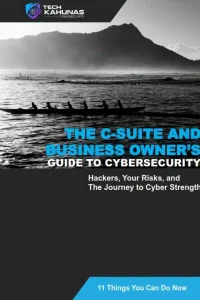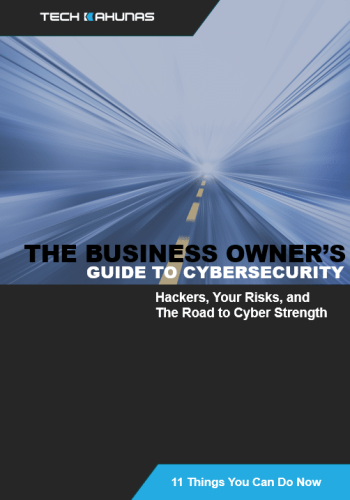Safeguarding intellectual property in biotech research is essential, given the sophistication of cyber threats faced by the industry. Key strategies include rigorous data encryption using AES and RSA algorithms to protect data integrity. Strengthening access controls with multi-factor authentication and role-based roles limit unauthorized data access. Regular security audits, both internal and external, guarantee compliance and readiness against potential breaches. Employee engagement through training enhances awareness and response capabilities. Collaborating with cybersecurity experts fortifies the incident response plans and aids in proactive risk management. By exploring these strategies further, one can effectively secure valuable biotech innovations.
Key Takeaways
- Implement advanced encryption protocols like AES and RSA to safeguard sensitive biotech research data.
- Employ secure key management practices, including hardware security modules, to prevent unauthorized access.
- Strengthen access controls with multi-factor authentication and role-based access control to regulate data access.
- Conduct regular security audits to identify vulnerabilities and ensure compliance with industry standards.
- Collaborate with cybersecurity experts for specialized threat intelligence and enhanced incident response strategies.
Understanding Biotech Cyber Threats
Invariably, the landscape of biotech research presents unique cybersecurity challenges due to the sensitive nature of the data and intellectual property involved.
Biotech espionage is a significant threat, as it involves unauthorized access to proprietary data, potentially leading to intellectual property theft and competitive disadvantage. Cyber attackers, often motivated by the financial or strategic value of biotech innovations, target weaknesses in research institutions’ cybersecurity frameworks to exfiltrate valuable information.
Ensuring data integrity is essential in maintaining the fidelity of research outcomes. Any compromise in data integrity can lead to altered research results, flawed scientific conclusions, and potential regulatory repercussions.
Sophisticated attacks may not only steal data but also modify it, introducing subtle but damaging changes that undermine the trustworthiness of research findings.
Biotech firms must employ advanced security measures, including robust encryption and real-time monitoring systems, to protect against these threats.
Furthermore, fostering a security-aware culture within research teams is vital to mitigate human error, which often serves as a gateway for cyber threats.
Assessing Risks in Research Data
In the domain of biotech research, evaluating risks in research data necessitates a rigorous identification of data vulnerabilities, including unauthorized access points and potential data corruption.
This evaluation is critical for developing robust threat mitigation strategies that encompass encryption protocols, access controls, and continuous monitoring systems.
Identifying Data Vulnerabilities
A critical first step in safeguarding biotech research is the identification of data vulnerabilities, which involves a meticulous assessment of potential risks inherent in research data. This process begins with thorough data mapping to understand the flow and storage of information across systems.
By conducting a thorough vulnerability assessment, organizations can pinpoint weaknesses and align them with compliance requirements and risk prioritization metrics. This evaluation is further refined through threat modeling, which anticipates potential attack vectors.
Key components of identifying data vulnerabilities include:
- Data Classification and Exposure Analysis: Categorizing data based on sensitivity and criticality helps in understanding potential exposure risks throughout the information lifecycle. This allows for targeted protection of high-value assets.
- Risk Prioritization and Incident Response Planning: By prioritizing vulnerabilities based on their potential impact, organizations can develop robust incident response strategies that focus resources on the most critical threats.
- Compliance and Threat Modeling: Ensuring alignment with regulatory standards and leveraging threat models to simulate possible breach scenarios aids in constructing resilient security postures.
Evaluating Threat Mitigation Strategies
To effectively protect biotech research data, examining threat mitigation strategies is vital, as it involves a systematic approach to evaluating risks associated with research data. This process begins with the identification of potential threats through robust threat intelligence systems that gather, analyze, and disseminate information about cyber threats. Such intelligence is essential for understanding the evolving cyber threat landscape and anticipating potential vulnerabilities within biotech research environments.
The next step involves evaluating the impact and likelihood of these threats materializing, which allows organizations to prioritize resources effectively. This risk assessment should incorporate a detailed analysis of data sensitivity, including intellectual property and proprietary research.
Once potential threats are identified and evaluated, developing a thorough incident response plan becomes fundamental. This plan must outline the procedures for detecting, responding to, and recovering from cyber incidents, guaranteeing minimal disruption to research activities.
Continuous monitoring and evaluation of threat mitigation strategies are fundamental, as cyber threats are dynamic and constantly evolving. Regular updates to incident response protocols and threat intelligence databases guarantee that the strategies remain relevant and effective.
Implementing Advanced Encryption
Implementing advanced encryption in biotech research necessitates a meticulous approach to selecting robust encryption algorithms that can withstand evolving cyber threats.
Establishing detailed data encryption protocols is essential to guarantee that sensitive research data remains protected both in transit and at rest.
Additionally, secure key management practices must be employed to prevent unauthorized access and maintain the integrity of encryption processes.
Encryption Algorithm Selection
Selecting the appropriate encryption algorithm is a significant decision in safeguarding sensitive biotech research data. This choice impacts data confidentiality, cryptographic key management, and compliance with regulatory standards.
Symmetric encryption offers simplicity and speed, utilizing a single cryptographic key for both encryption and decryption, making it suitable for environments prioritizing performance. Asymmetric encryption, while more secure due to its dual-key system, can introduce a performance impact, necessitating careful consideration for real-time applications.
Encryption algorithms can be categorized into two primary types: block ciphers and stream ciphers. Block ciphers, such as AES, process data in fixed-size chunks, guaranteeing robust security suitable for bulk data encryption. Stream ciphers, however, encrypt data in a continuous stream, offering advantages in scenarios where data size is unpredictable.
A robust encryption strategy must consider:
- Encryption Standards: Adherence to established standards like AES and RSA guarantees compatibility and trustworthiness.
- Performance Impact: Evaluating the computational cost of encryption algorithms is essential for maintaining system efficiency.
- Regulatory Compliance: Confirming selected algorithms meet industry-specific regulations is crucial for legal and ethical assurance.
Ultimately, the encryption algorithm selection should be aligned with the organization’s risk profile and operational requirements.
Data Encryption Protocols
Effective data encryption protocols are essential to securing sensitive biotech research data. As these datasets often contain proprietary information and intellectual property, employing robust encryption technologies is imperative. Advanced encryption methods such as AES (Advanced Encryption Standard) and RSA (Rivest-Shamir-Adleman) provide high levels of data privacy, ensuring that only authorized parties can access the information.
AES, with its symmetric key algorithm, is favored for its speed and efficiency in encrypting large volumes of data, a critical requirement in the biotech sector where datasets can be extensive. RSA, on the other hand, is a widely used asymmetric encryption technology that facilitates secure data exchange over potentially insecure networks by utilizing a public-private key pair.
This dual-layered approach enhances the security framework by addressing both data-at-rest and data-in-transit vulnerabilities. A detailed understanding of the encryption protocols is necessary to tailor these technologies to specific data privacy requirements, ensuring they align with industry standards and regulatory compliance.
Additionally, regular audits and updates to encryption protocols mitigate risks associated with evolving cyber threats, thereby maintaining the sanctity and confidentiality of biotech research data. Effective implementation of these protocols is non-negotiable in the pursuit of safeguarding intellectual property in the biotech industry.
Secure Key Management
In the domain of advanced encryption, secure key management stands as a cornerstone for maintaining data integrity and confidentiality in biotech research. Effective key management entails several vital components that guarantee robust cryptographic policies and secure storage of encryption keys.
The following are essential aspects to ponder:
- Key Distribution and Access Protocols: Establishing reliable key distribution mechanisms is fundamental. This involves implementing stringent access protocols that restrict key access to authorized personnel only, thereby enhancing authentication methods and reducing unauthorized access risks.
- Compliance Regulations and Secure Storage: Adhering to compliance regulations is imperative. Confirming that encryption keys are stored in secure environments, such as hardware security modules (HSMs), mitigates potential vulnerabilities and aligns with industry standards for data protection.
- Incident Management and Backup Solutions: Developing thorough incident management plans, including emergency response strategies, is necessary. Implementing backup solutions guarantees that keys are recoverable in the event of a breach, thereby maintaining data integrity and minimizing disruption.
Strengthening Access Controls
When it comes to fortifying the security framework of biotech research facilities, bolstering access controls is paramount. Implementing robust access control policies is essential in safeguarding sensitive intellectual property from unauthorized access. Organizations must deploy thorough user authentication methods to guarantee that only authorized personnel can access critical data and systems. These methods may include multi-factor authentication (MFA), biometric verification, and role-based access controls (RBAC) to provide layered security measures tailored to specific access needs.
| Access Control Element | Description |
|---|---|
| Access Control Policies | Define who can access what resources and under what conditions. |
| User Authentication | Verifies the identity of users before granting access. |
| Multi-factor Authentication (MFA) | Utilizes multiple credentials to enhance security. |
| Role-based Access Control (RBAC) | Assigns access permissions based on user roles. |
Employee Training and Awareness
Awareness is the cornerstone of robust cybersecurity in biotech research. To effectively safeguard intellectual property, ongoing employee training and awareness initiatives are indispensable. By implementing extensive programs, organizations can mitigate risks related to social engineering and data handling.
Here are three essential components:
- Phishing Simulations and Security Workshops: Regular phishing simulations are instrumental in identifying vulnerabilities in employee responses to potential threats. These exercises, coupled with security workshops, enhance the ability of personnel to recognize and respond to cyber threats effectively, thereby reducing the risk of data breaches.
- Role Playing Exercises and Awareness Campaigns: Role playing exercises are fundamental in reinforcing cybersecurity protocols through experiential learning. Additionally, targeted awareness campaigns serve to disseminate important information on best practices and emerging threats. Leveraging these strategies guarantees that employees are well-versed in incident reporting and risk communication.
- Compliance Training and Online Resources: Compliance training guarantees that employees understand legal and organizational requirements pertaining to data protection. Providing access to online resources allows employees to stay updated on current cybersecurity trends and practices, fostering a culture of vigilance.
Implementing these initiatives creates a resilient workforce capable of defending against advanced cyber threats, thereby safeguarding critical biotech research.
Regular Security Audits
Building on the foundation of employee training and awareness, conducting regular security audits is a critical component in maintaining the integrity of biotech research environments. Establishing an ideal audit frequency is essential to guarantee continuous adherence to compliance standards and to detect any vulnerabilities in the system.
Both internal audits and external audits play pivotal roles, with external audits providing objective oversight, while internal audits offer regular checks aligned with organizational goals.
Employing a variety of audit methodologies tailored to specific areas of risk assessment enhances the thoroughness of the process. This includes leveraging advanced audit tools to automate data collection and analysis, thereby increasing efficiency and accuracy.
Audit reporting should be extensive yet concise, identifying potential risks and offering actionable insights for process improvement.
Adhering to best practices in security auditing involves meticulous documentation and clear communication of findings to relevant stakeholders. This transparency facilitates informed decision-making and fosters a culture of continuous improvement.
Effective audits also necessitate periodic reviews of the audit methodologies themselves, ensuring they evolve with emerging threats and technological advancements, thereby safeguarding the intellectual property integral to biotech research.
Collaborating With Cybersecurity Experts
Collaborating with cybersecurity experts is a strategic necessity for biotech research facilities aiming to protect sensitive data and intellectual property. With the escalating complexity of cyber threats, these collaborations enhance data privacy, fortify incident response strategies, and guarantee adherence to compliance regulations.
Cybersecurity experts bring in specialized threat intelligence, enabling biotech firms to anticipate and mitigate potential risks. Their expertise in security assessments and risk management is pivotal in creating robust security frameworks tailored to the unique challenges of biotech research.
A well-coordinated collaboration with cybersecurity professionals can encompass several critical components:
- Security Assessments: Conducting thorough evaluations of existing security measures to identify vulnerabilities and implement necessary enhancements.
- Third Party Audits: Engaging external experts to perform unbiased audits, guaranteeing compliance with industry-standard security protocols and regulations.
- Risk Management Strategy: Developing a proactive approach to identify, assess, and prioritize risks, followed by the coordinated application of resources to minimize, monitor, and control the probability or impact of unfortunate events.
Frequently Asked Questions
How Can Startups Afford Sophisticated Cybersecurity Measures for Biotech Research?
Startups can afford sophisticated cybersecurity by implementing cost-effective solutions and forming collaborative partnerships. Leveraging shared resources, expertise, and technology helps mitigate risks while minimizing expenses, ensuring robust protection for sensitive research data in a financially sustainable manner.
What Role Does Cloud Computing Play in Biotech Data Protection?
Cloud computing enhances biotech data protection through advanced cloud security measures, including robust data encryption. These technologies guarantee sensitive information is safeguarded against unauthorized access, minimizing risk and enhancing compliance with industry-specific privacy and security standards.
How Do International Regulations Impact Biotech Cybersecurity Strategies?
International regulations greatly influence biotech cybersecurity strategies by necessitating global compliance. Regulatory challenges, data sovereignty, and cross-border issues demand harmonization efforts, emphasizing risk management, enforcement policies, and addressing liability concerns to guarantee robust protection of sensitive data.
What Are the Emerging Technology Trends for Enhancing Biotech Cybersecurity?
Emerging technology trends enhancing biotech cybersecurity include advanced biotech encryption algorithms and the integration of blockchain for ensuring data integrity. These innovations address vulnerabilities by safeguarding sensitive information, thereby reducing risks of unauthorized access and data breaches in biotechnological research.
How Can Small Biotech Firms Build a Culture of Cybersecurity Awareness?
Small biotech firms can cultivate a cybersecurity-aware culture by implementing thorough employee training programs and establishing robust security protocols. Continuous education guarantees staff understand risks, while strict adherence to protocols mitigates potential cybersecurity threats effectively.



 Get your CPA firm aquainted with new FTC rules.
Get your CPA firm aquainted with new FTC rules. 




